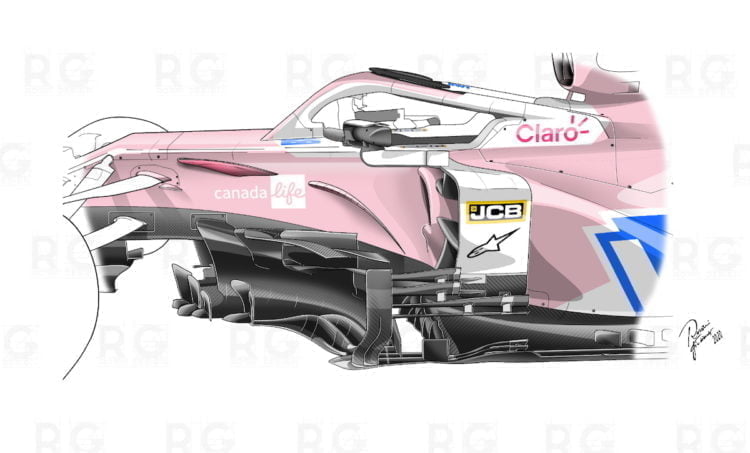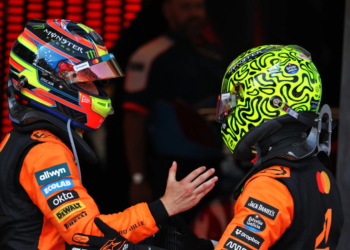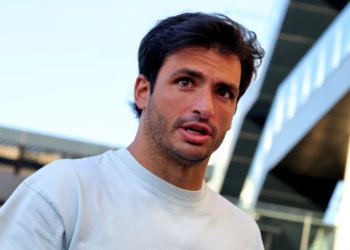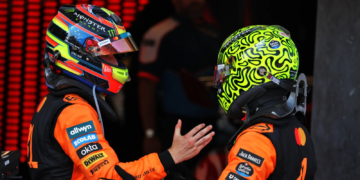The aerodynamics of a current F1 car sees a maximum expression of research, development, and extremism, in the flow deviators placed between the front wheels and the sidepods, often referred to as the ‘bargeboard’.
These bargeboards are aerodynamic elements that have the purpose of diverting and managing the air-flow coming from the front axle, conditioning it and channelling it towards the underside of the car, the sidepods and then to the rear diffuser.
Since 2017, the bargeboards have returned to play a predominant role in the management of air-flow and vortices that affect the car, and over the past three years they have been subject to considerable development. They are amongst the most expensive and complex aerodynamic elements in design, construction and development.
Last year there was a rumour that Mercedes was going to devote a team of more than ten aerodynamicists just to concentrate on the development of this one particular area.
Their shapes and sizes are obviously dictated by the regulations, which are often the very cause of their complicated and bizarre shapes. The current regulations require that: “when you look at the car from below the bargeboard area, it must be possible to see the sky.”
This of course applies in a very specific area, inducing the teams to make the most of what the regulation allows by extending the carbon surfaces to the maximum allowed limits.

The bargeboards (see yellow highlighted area), with their complex sinuous shapes, are also an engineering masterpiece, and some are made up of almost 30 individual aerodynamic elements in total. The air deviators extend up the sides, with aerodynamic appendages (blue) also placed on the sides of the radiator openings which serve to keep the laminar flows around the bodywork attached, following the correct fluid dynamics offered by their shape.
Like all the other aerodynamic parts of an F1 car, they are made entirely of carbon fibre composite material, with some metallic reinforcement for stiffness. The teams are continually trying to develop this area of the car, which is primarily responsible for managing the flows that will affect the rear axle.
Some solutions have literally set the standard for other teams, as often happens in F1, among those is that of the long “boomerang” aerodynamic profile, first introduced by Red Bull, before it was then copied by other teams, including Mercedes in 2018 (with a double boomerang, seen below on the 2020 Racing Point) and then McLaren, and lastly Ferrari in 2019.
In the images below, we look at the bargeboards of the Renault RS20 and how they compare to those of the Racing Point RP20, which are two of the teams that have come up with some of the more extreme 2020 aerodynamic solutions.












Discussion about this post